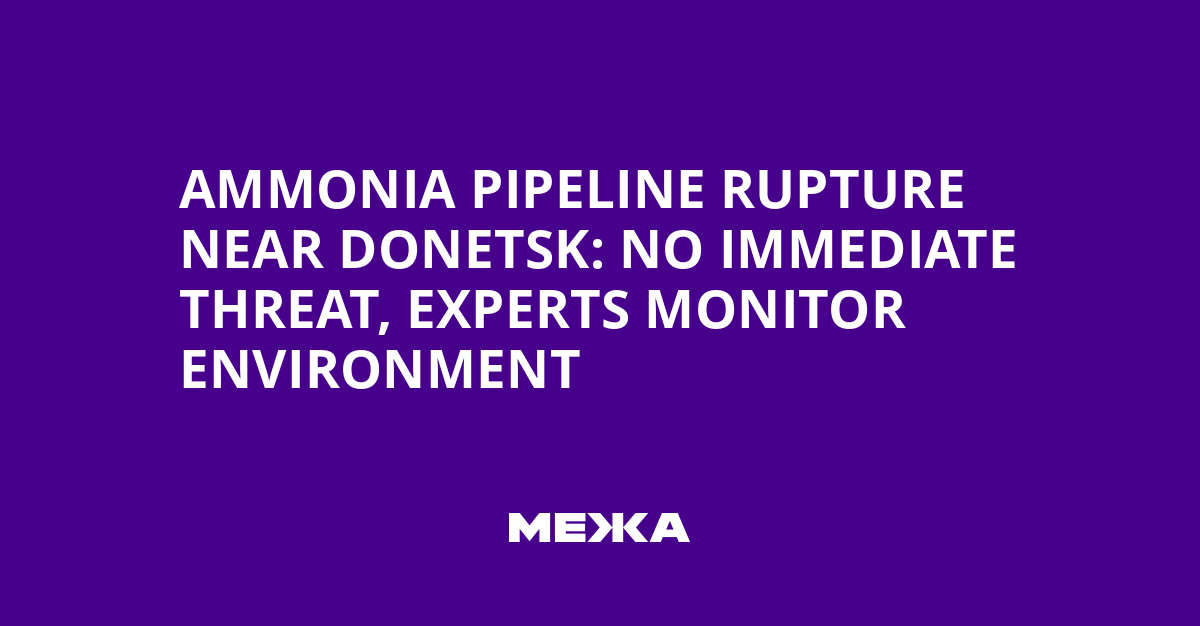The rupture of the Togliatti–Odessa ammonia pipeline near the villages of Rusyn Yar and Yablunivka in Donetsk region does not pose an immediate threat to people’s lives according to preliminary environmental assessments. Under certain weather conditions, ammonia can rise to the upper soil layer, but for precise conclusions, detailed studies and field assessments of environmental condition are required.
According to the Donetsk Regional Center for Disease Control and Prevention, transport of ammonia along this section has been halted since 2014. Specialists of the center are already conducting laboratory air measurements in Druzhkivka and Kramatorsk, as monitoring the atmosphere is one of the key directions in short-term risk assessment.
People’s lives are not at risk. There is no reason for an exaggerated reaction. If there is a noticeable smell, simply close the windows and limit outdoor activity – this is a preventive step
– Donetsk Regional Center for Disease Control and Prevention
Impact on soil and air: what experts expect in the near term
Ecologist Yevhen Hlobystov explained that the section of the pipeline had not been operated for more than 10 years, so only traces of ammonia entered the air. Depending on the distance from the source, the gas concentration decreases, and the traces quickly dissolve in the air due to the ammonia’s lightness. At this site, ammonia is not actively transported – it is mostly leftovers from past years.
According to the specialist, even if ammonia enters the soil, its spread is limited to several tens of meters from the rupture site. The main threat now is precisely linked to potential contamination of the upper soil layer, which depends on weather conditions. Although rainfall during the incident was not recorded, the probability of significant contamination remains low, but requires further monitoring.
A temporary ban on visiting the area complicates the inspection of the scene of the incident, but experts emphasize: the consequences for people and the environment depend on further measurements of air and soil and on the weather conditions in the coming days.
